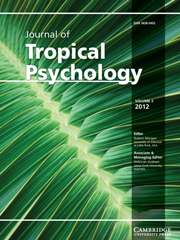Article contents
Translation of the WHO CIDI into Bahasa Melayu
Published online by Cambridge University Press: 25 May 2015
Abstract
The Singapore Mental Health Survey was undertaken to establish the prevalence of mental disorders in Singapore. This necessitated translation of several modules of the WHO's Composite International Diagnostic Interview (CIDI) into Bahasa Melayu. The aim in translation was to achieve a conceptually equivalent version to the original instrument. The translation procedure was a four-step process: 1) forward translation, 2) expert panel review, 3) pre-test and cognitive interview and 4) development of the final version. The translation procedure was effective in identifying and resolving translation problems, and adapting the language of the instrument to suit the local Malay-speaking population. We recommend this four-step process for future studies to attain a fair representation of minority groups in nation-wide studies.
Keywords
- Type
- Articles
- Information
- Copyright
- Copyright © The Author(s) 2015
References
- 2
- Cited by




